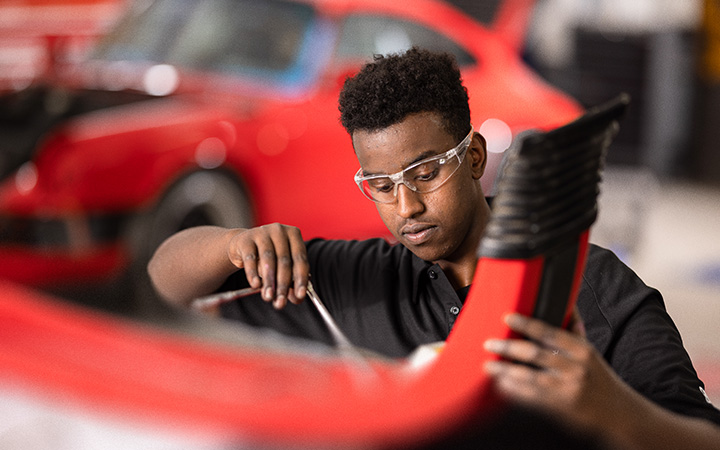When asked how they intended to achieve this growth, 64% said they aimed to improve business efficiency, while 42% expressed the ambition to employ more staff and 40% wanted to increase the capacity of their workshops.
Given the current challenges surrounding finding and retaining qualified staff, achieving growth by employing more staff and/or increasing workshop capacity might not be as easy as many business owners assume.
As such, a more effective strategy might be to concentrate on improving efficiency, and this means focusing more on the cars that you have in your workshop rather than trying to get more through it.
The changing role of the modern mechanic
Vehicles are becoming much more complex, timeconsuming and expensive to service and repair. It follows that the role of the automotive technician has become more important than ever. They shouldn’t see themselves simply as service mechanics who do the standard grease and oil change, plus any repairs that the customer wants to do.
Compounding the issue is the fact that car owners have long since stopped fussing with their own cars. This means there is now even more of an obligation on workshop personnel to protect their customers and try to stave off costly repairs.
In fact, customers often need to be educated about the importance of ongoing maintenance.
The longer service intervals now suggested by car makers and their dealerships might be OK in an ideal world, but real-world driving environments and patterns are far from perfect. This makes regular maintenance on a whole raft of vehicle components as vital now as it ever was.
Why preventative maintenance is the future
So, when someone drops off their car for an oil service, a good workshop must now look to the vehicle’s future. Technicians must ask themselves, “what maintenance does this vehicle need to ensure it doesn’t break down and have problems in the foreseeable future?”.
This is called preventative maintenance.
Most independent workshops assume they do this well, but TaT research has clearly shown that vehicles are leaving workshops every day without necessary maintenance being completed. This is happening because the workshop might be too busy, or they assume the customer can’t afford it, or even worse, they adopt a “she’ll be right” attitude.
However, there is a clear difference between ethically upselling preventative maintenance services and ripping people off by duping them into paying for things they don’t need. The key is to communicate with your customers effectively, build trust and use your knowledge and experience to proactively offer services that will save them money (and hassle) in the future.
How to calculate the revenue potential of preventative maintenance
To quantify the revenue potential of these routine maintenance items, TaT Biz offers an Average Service Price Calculator template that will calculate how many of these additional items you could be selling on average each week and the associated revenue this will generate. The template can be downloaded at tatbiz.net.au
Using this tool has the potential to illustrate that a significant amount of revenue is walking out of your workshops every week. In doing so, it can demonstrate the immense growth potential that exists in focusing on the cars that are already in your workshop, as opposed to worrying about increasing your workshop capacity and servicing more cars.
It’s highly likely that there is enough revenue potential in the cars that are already booked each day to reach the most ambitious workshop growth targets.


